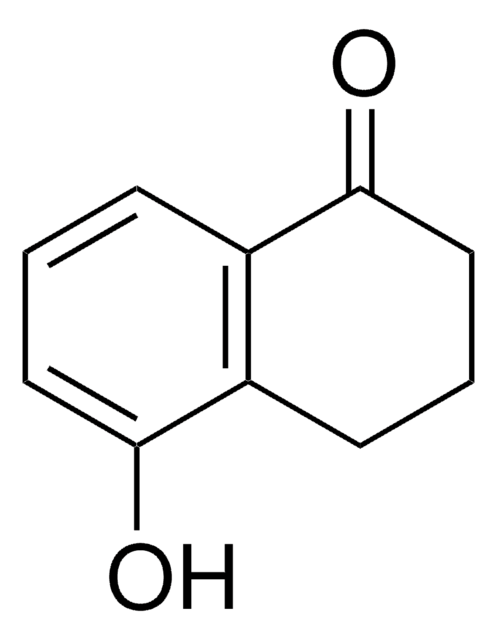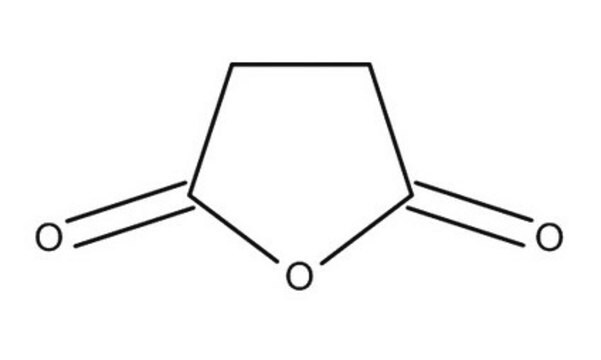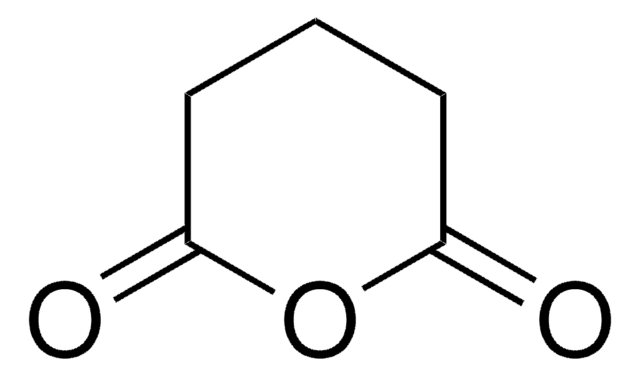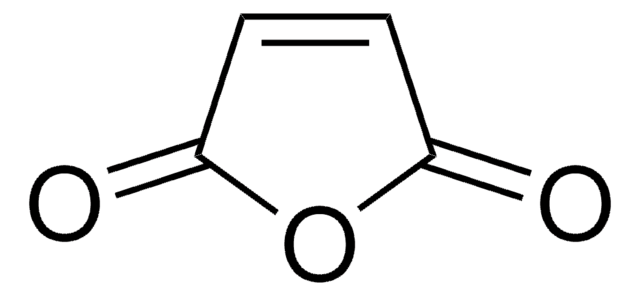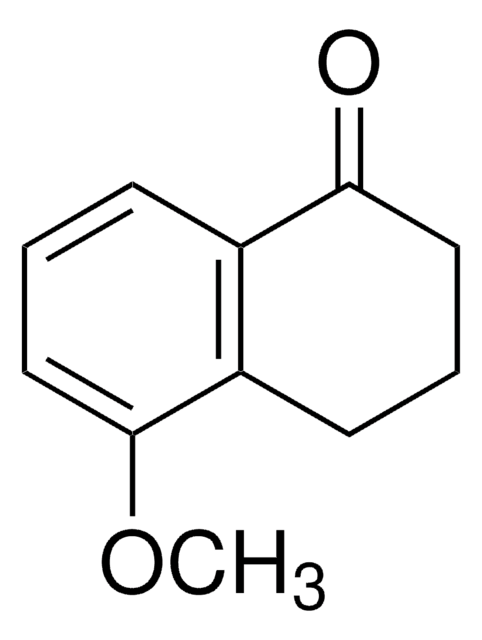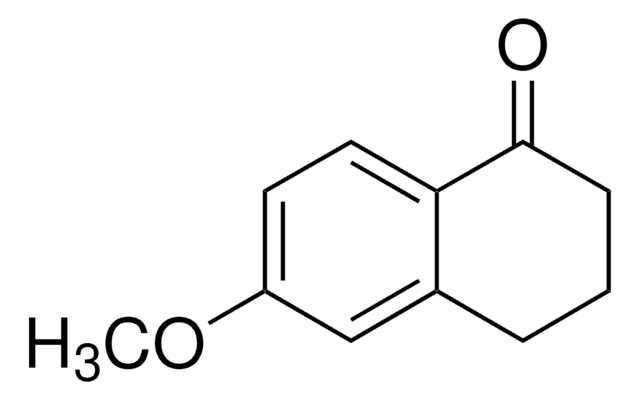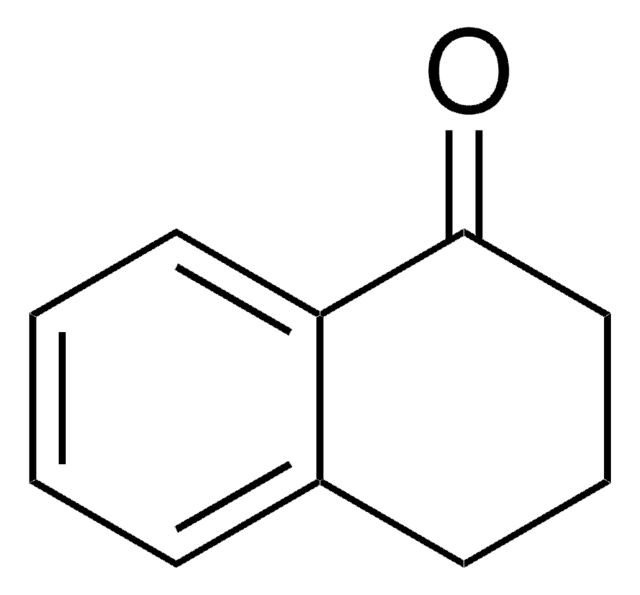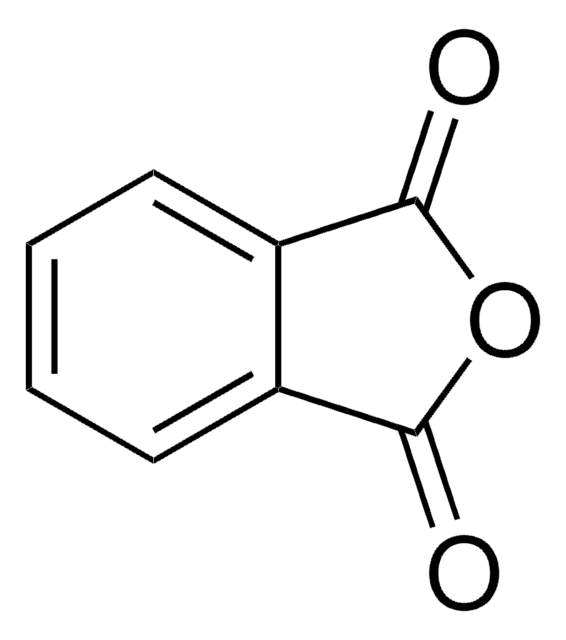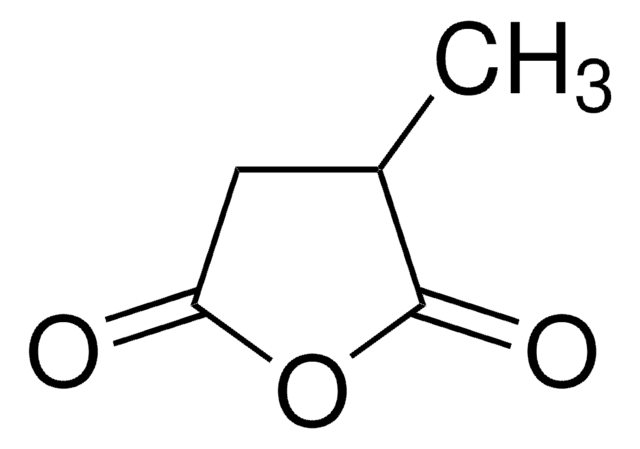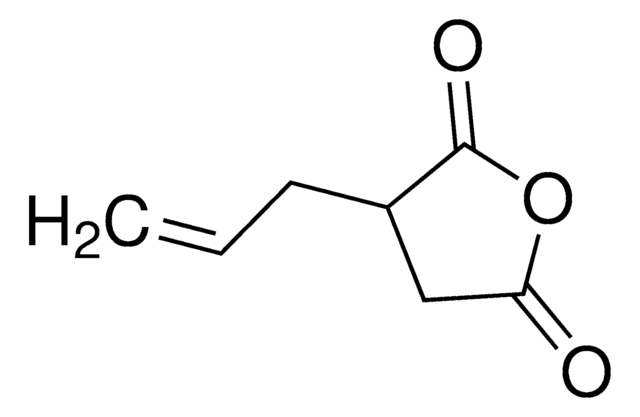239690
Succinic anhydride
≥99% (GC)
Synonyme(s) :
Dihydro-2,5-furandione
About This Item
Produits recommandés
Densité de vapeur
3.5 (vs air)
Pression de vapeur
1 mmHg ( 92 °C)
Essai
≥99% (GC)
Forme
solid
pb
261 °C (lit.)
Pf
118-120 °C (lit.)
Chaîne SMILES
O=C1CCC(=O)O1
InChI
1S/C4H4O3/c5-3-1-2-4(6)7-3/h1-2H2
Clé InChI
RINCXYDBBGOEEQ-UHFFFAOYSA-N
Vous recherchez des produits similaires ? Visite Guide de comparaison des produits
Catégories apparentées
Description générale
Application
- In the preparation of covalently cross-linked oxidized-alginate/N-succinyl-chitosan hydrogels, as injectable systems towards tissue engineering.
- In preparing functionalized oxide surfaces on a chip.
- As a starting material to synthesize polyesters in presence of a metal triflate as a catalyst.
- As a cross-linking agent to enhance the mechanicalproperties and antimicrobial activities of zein films.
Mention d'avertissement
Danger
Mentions de danger
Classification des risques
Acute Tox. 4 Oral - Eye Dam. 1 - Resp. Sens. 1 - Skin Corr. 1B - Skin Sens. 1
Code de la classe de stockage
8A - Combustible corrosive hazardous materials
Classe de danger pour l'eau (WGK)
WGK 1
Point d'éclair (°F)
314.6 °F
Point d'éclair (°C)
157 °C
Équipement de protection individuelle
dust mask type N95 (US), Eyeshields, Gloves
Faites votre choix parmi les versions les plus récentes :
Certificats d'analyse (COA)
Vous ne trouvez pas la bonne version ?
Si vous avez besoin d'une version particulière, vous pouvez rechercher un certificat spécifique par le numéro de lot.
Déjà en possession de ce produit ?
Retrouvez la documentation relative aux produits que vous avez récemment achetés dans la Bibliothèque de documents.
Les clients ont également consulté
Notre équipe de scientifiques dispose d'une expérience dans tous les secteurs de la recherche, notamment en sciences de la vie, science des matériaux, synthèse chimique, chromatographie, analyse et dans de nombreux autres domaines..
Contacter notre Service technique